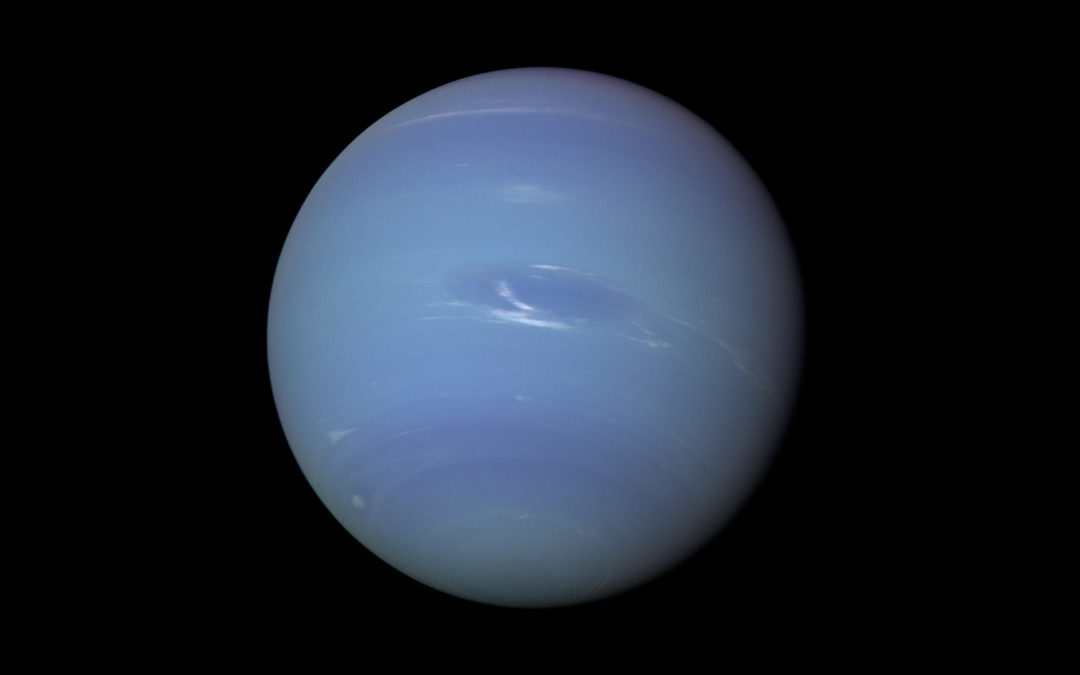The outermost planet of our solar system is a world of wonder and mystery. Neptune is a virtual twin to Uranus, similar in size and color. But its differences are fascinating and challenge secular thinking.
Discovery
The early nineteenth century was a time of great excitement and discovery for astronomy. As telescopes became increasingly accessible and of higher quality, new discoveries poured in at an increasing rate. Astronomers knew of seven planets and had discovered a number of moons. The first few asteroids had been discovered. And there was no longer any doubt about the true nature of the solar system as an arrangement of planets, asteroids, and comets orbiting the sun along with moons orbiting planets.
Furthermore, astronomers even understood why objects in space move as they do: the force of gravity caused objects to orbit. The laws of motion and the law of gravity discovered by Newton in concert with the new mathematics of calculus allowed scientists to predict the positions of planets and moons with great precision. In fact, astronomers had learned about the phenomenon of gravitational perturbation – the slight deviation planets make from the prediction of Kepler’s laws due to the gravitational influence of other planets. Newton’s laws allowed scientists to compute this effect.
So, it was rather perplexing when astronomers found that the planet Uranus didn’t quite move as expected. By the 1840s, it was clear that the path of Uranus deviated slightly from its predicted path according to Newtonian physics. Astronomers had included the slight gravitational tug of the planets Saturn and Jupiter on Uranus, and yet the planet still did not quite match the predicted path. Was something wrong with Newton’s laws?
Newtonian physics had been extremely successful in predicting the motion of literally everything else in the solar system – the other six planets and their moons, along with comets and asteroids. Herschel’s discoveries of binary star systems demonstrated that Newton’s laws even worked far beyond the solar system. Why didn’t they work for Uranus?
Of course, astronomers can only predict the precise positions of planets using Newton’s laws if they include the gravitational effects of all nearby masses. But what if there was an undiscovered large mass near Uranus? Could the gravitational pull of an undiscovered planet cause the unusual movement of Uranus? If so, where would this planet have to be in order to cause Uranus to move as it does?
In the early 1840s, two mathematicians independently set out to answer this question: John Couch Adams from England and Urbain Le Verrier from France. Each was unaware of the other’s work on the problem, and both arrived at the same solution: another planet orbited the sun beyond Uranus. By 1846, both mathematicians were able to calculate the position of this as-yet-undiscovered planet. Le Verrier mailed his prediction to Johann Galle at the Berlin Observatory; the letter arrived on September 26. Galle began searching for the new planet immediately, comparing the view at the location predicted by Le Verrier with earlier star charts to see if one of the stars had moved. Sure enough, Galle found the new planet that very evening and within 1 degree of Le Verrier’s prediction.
This was a remarkable triumph of Newtonian physics because it was the first time a planet had been discovered by the use of mathematics, rather than accidental observations. Le Verrier became known as “the man who discovered a planet with the point of his pen.” Of course, Adams had also made this prediction. Adams graciously agreed that Le Verrier deserved to be credited as the discoverer of this new planet. And Le Verrier’s prediction was more accurate than that of Adams. To this day, many textbooks credit both Le Verrier and Adams as the discoverers of Neptune.
A Rose by Any Other Name
But what to name this new planet? Le Verrier first proposed the name Neptune, after the Roman god of the sea. The French quickly adopted the name “Le Verrier” and used this in their published almanacs and also reintroduced the name “Herschel” for the planet Uranus. However, this did not catch on outside of France, and particularly in England where the common feeling was that Adams should be considered the discoverer of the new planet.[1] Eventually the tradition of naming a planet after a Roman god prevailed over politics, and the name Neptune was rapidly accepted.[2]
Although Galle was the first person to recognize Neptune as a planet in a telescope, he was not the first person to see Neptune. That honor goes to Galileo. Galileo made systematic observations of Jupiter and its moons, drawing sketches night after night, which included background stars as Jupiter passed by them. On December 28, 1612 and again on January 27, 1613, Jupiter passed very close to Neptune, close enough that the two planets would both appear in the same field of view of a small telescope. Galileo’s sketches on those two dates show that he did indeed see Neptune and recorded its position as a background star. Neptune moves very slowly compared to Jupiter, so Galileo understandably did not notice the motion of this background “star” – otherwise, he would have discovered that it is a planet.
Physical and Orbital Characteristics
Neptune is the “little big brother” of Uranus. Neptune is 30,599 miles in diameter, just slightly smaller than Uranus, but the mass of Neptune is greater than that of Uranus. So, Neptune is the third most massive planet in the solar system, but the fourth largest. Its composition is very similar to Uranus – an ice giant with no solid surface, blanketed with a thick hydrogen-helium atmospheric envelope. As with Uranus, Neptune has abundant methane in its atmosphere, which gives rise to its blue color.
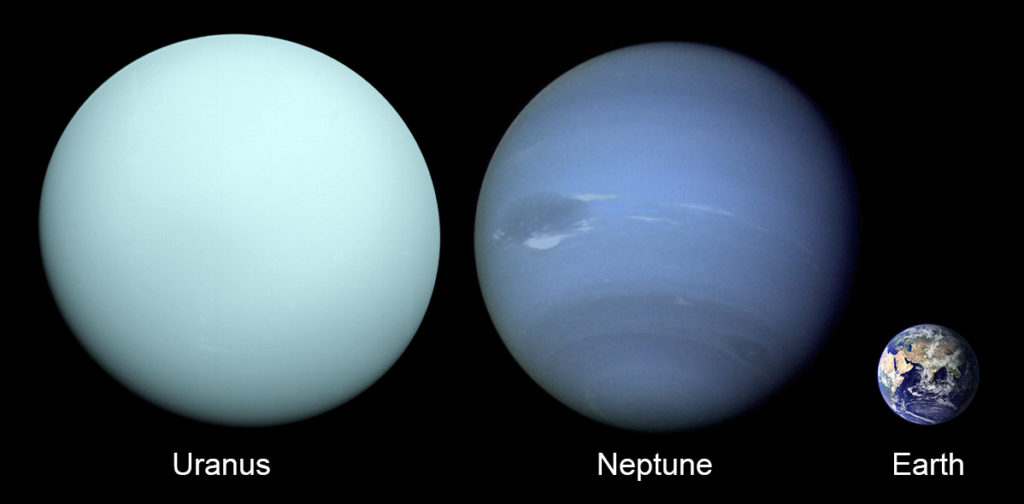
Neptune orbits the sun at an average distance of 2.8 billion miles, which is 57% farther than Uranus, and 30 times farther than Earth. As such, Neptune has the largest orbital period of any planet, taking 164.8 years to orbit the sun once. In July 2011, Neptune made its first complete orbit since its discovery. At such a distance, the sun would appear 30 times smaller than it does from Earth, and would appear nine hundred times fainter. Neptune cannot be seen by the unaided eye, but is visible in binoculars and easily visible in any backyard telescope. With a 6-inch diameter or smaller telescope, you will find it very difficult to see any size to Neptune. But larger telescopes will show a very tiny blue disk, similar to Uranus, though smaller.
Neptune rotates once every 16 hours. However, since it is not solid, different latitudes rotate at slightly different rates, with 16 hours being the average. Its rotation axis is tilted relative to its orbital axis by 28 degrees, comparable to Saturn’s tilt and slightly greater than that of Earth and Mars. So Neptune would experience comparable seasons to Earth, although they would last 164.8 times longer due to its long orbital period. As with many other planets, the tilt of Neptune is not a prediction of secular formation scenarios; a collapsing nebula would have produced planets that are not tilted.
In the fact, the existence of Neptune challenges secular formation scenarios. Current models suggest that the outer regions of the solar system had far too little material to form planets like Neptune. Current secular thinking is that such planets actually formed much closer to the sun, and then migrated outward to their current locations. Evidence for such a scenario is lacking.
Triton and Nereid
Neptune’s largest moon, Triton, was discovered only 17 days after the discovery of Neptune itself. The name Triton refers to a Greek sea god who is the son of Poseidon (the Greek version of the Roman god Neptune). This name was proposed decades after the discovery of the moon, and did not become readily used until the mid-20th century. Before such time, Triton was simply referred to as “the satellite of Neptune.”
With a diameter of 1682 miles, Triton is the seventh largest moon in our solar system, about 78% the size of Earth’s moon. Like all large moons, Triton is tidally locked (keeping the same face pointed toward the planet at all times) and has a fairly circular orbit. It orbits relatively close to Neptune at a distance of 220,000 miles. In these respects, Triton seems fairly normal.
However, Triton is a very special and unique moon. Unlike any other large moon, Triton orbits retrograde – the opposite direction that Neptune rotates. Furthermore, all large moons orbit very near the plane of their planet’s equator with only two exceptions. One of these is Earth’s moon, which orbits near the ecliptic. The other, of course, is Triton. Triton’s orbital plane is not aligned with the ecliptic, nor is it aligned with Neptune’s equator, but is tilted 30 degrees to the former and 23 (or 157) degrees to the latter. It is the largest irregular moon in the solar system. So, Triton is just weird.
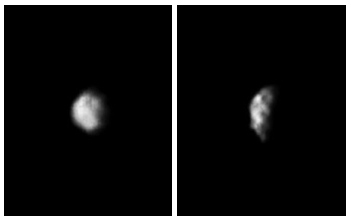
Neptune’s second moon, Nereid, was discovered in 1949. Nereid is roughly 220 miles in diameter. Its precise shape is unknown since no high-resolution images exist, but is likely non-round.[3] Nereid orbits Neptune prograde and at much greater distance than Triton. And its orbit has one of the highest eccentricities of any moon.[4] It comes no closer to Neptune than 884,000 miles, and then moves out to a farthest distance of 5.96 million miles. Nereid takes 360 days to orbit Neptune. Although much smaller than Triton, Nereid is the second largest irregular moon in the solar system. Interestingly, Nereid is actually Neptune’s third largest moon. The second largest moon, Proteus, evaded detection until the Voyager 2 flyby in 1989.[5]
The End of an Era
The extreme distance of Neptune makes detailed Earth-based observations difficult. So, as with Uranus, our best images of Neptune come from the Voyager 2 spacecraft which flew past the ice giant in late August 1989. This would be the last planet visited by Voyager 2, and the most distant planet ever photographed by spacecraft.[6] During the late 1970s and early 1980s, the planets Jupiter, Saturn, Uranus, and Neptune were aligned in a rare spiral pattern, which allowed scientists to use the gravity of one planet to slingshot Voyager 2 to the next planet and so on. Hence, this rare grand alignment of the planets allowed Voyager 2 to visit all four outer planets.[7] To this day, Voyager 2 is the only spacecraft to visit Uranus and Neptune. The Neptune encounter signaled the end of “the grand tour” of the solar system. And what a spectacular last chapter!
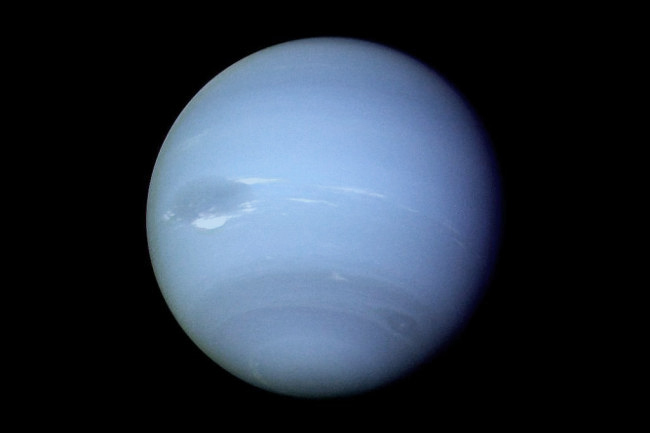
I recall seeing one of the first high-resolution images of Neptune as a greyscale image in a newspaper, and thinking that it looked remarkably like Jupiter. The image showed a large dark spot just south of the equator very similar to Jupiter’s Great Red Spot (GRS). Yes, Voyager 2 discovered that Neptune also has a large oval, quasi-stable storm, the “Great Dark Spot,” similar to Jupiter’s Red Spot, but dark blue in color. It is an enormous cyclone, a low-pressure system in contrast to Jupiter’s high-pressure GRS. Unlike Jupiter’s storm, the Great Dark Spot on Neptune often disappears completely and then reappears after a time. This was discovered later in images taken by the Hubble Space Telescope. Furthermore, a different great dark spot sometimes forms in Neptune’s northern hemisphere. But these facts were discovered many years after the Voyager encounter.
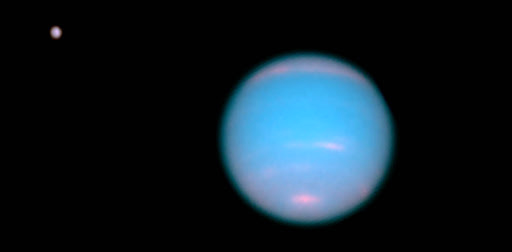
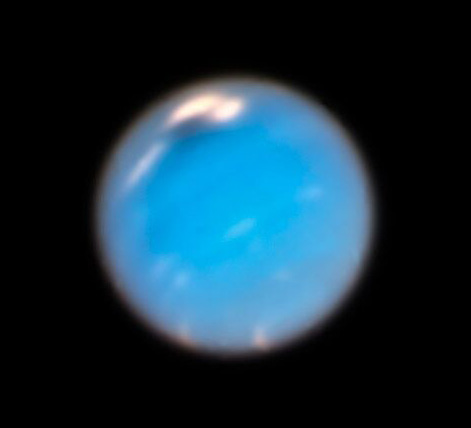
The Voyager 2 spacecraft provided the first high-resolution color images of Neptune, and they were truly spectacular. The blue color of the planet (slightly richer than that of Uranus) combined nicely with the darker blue of the dark spot. The dark spot was roughly centered between two faint yet detectable dark belts – one in southern hemisphere and the other in the north. A few bright white cirrus clouds provided a lovely contrast. One of these clouds seemed as if it were being sucked into the cyclone of the dark spot.

Voyager 2 measured the magnetic field of Neptune for the first time, and confirmed the creationist prediction that the field strength would still be strong after 6000 years of decay.[8] As with the magnetic field of Uranus, Neptune’s magnetic field is not aligned with its rotation axis, and is not centered on the center of the planet. This strongly challenges secular notions of magnetic dynamos, but is consistent with a free decay on the biblical timescale.
Like Jupiter and Saturn, Neptune has significant internal heat, emitting 2.6 times as much energy as it receives from the sun. If the planet were 4.5 billion years old as secularists believe, then the planet would have had plenty of time to disperse all of its heat, and there would be none left. The internal heat of Neptune is consistent with its biblical age of about 6000 years.
Rings
Voyager 2 also found that Neptune has rings. This is apparently a common feature among giant planets. There was some ground-based evidence of rings around Neptune as early as 1968. This was derived from brightness measurements of a background star during an occultation event, similar to the way the rings of Uranus were discovered. However, follow-up observations failed to consistently confirm the rings. So, the ground-based observations were somewhat inconclusive. Voyager 2 removed all doubt by directly imaging these faint rings. Three prominent rings are easily seen in Voyager images; from outer to inner they are the Adams ring, the Le Verrier ring, and the fainter Galle ring. Two additional faint rings, the Lassell and Arago, were also discovered in between the Adams and Le Verrier rings.

The Adams and Le Verrier rings are bright enough that they have now been directly imaged by the Hubble Space Telescope. These two rings, along with the Galle and Arago rings, are narrow, rope-like structures, similar to Saturn’s F ring, and the main rings of Uranus. The Lassell ring is a broader sheet-like ring similar to Jupiter’s rings. Lassell extends from the Le Verrier ring to the Arago ring.
Curiously, a section of the Adams ring contains five bright arcs, as if material was clumped more densely in these locations. This is strange because rings particles should spread out over time and become evenly distributed around their orbit. The exact mechanism causing such arcs is currently unknown, however the gravitational influence of nearby moons is strongly suspected.

Moons
Voyager 2 also discovered six additional small moons orbiting close to Neptune among the rings, bringing the total number of moons to eight.[9] Some of these moons are shepherd satellites, keeping the ring particles constrained in their orbits. Galatea, for example, orbits just inside the Adams ring. Its gravity constrains the Adams ring and may be responsible for the arcs. The moons Naiad and Thalassa orbit between the Galle and Le Verrier rings. Voyager 2 discovered and provided the only high-resolution images to date of Neptune’s second largest moon, Proteus, which is oddly shaped.

An additional inner moon, Hippocamp, was discovered in 2013 from Hubble Space Telescope images of Neptune. Amazingly, this moon was too faint to be detected by Voyager 2 during the flyby; but it can be detected by Hubble at a distance of 2.8 billion miles. The Hubble Space Telescope is a truly remarkable instrument. As with all inner moons of all planets, the inner seven moons of Neptune orbit prograde and in the plane of their planet’s equator. This design feature prevents collision or gravitational instability from close passes in the limited space so close the planet.
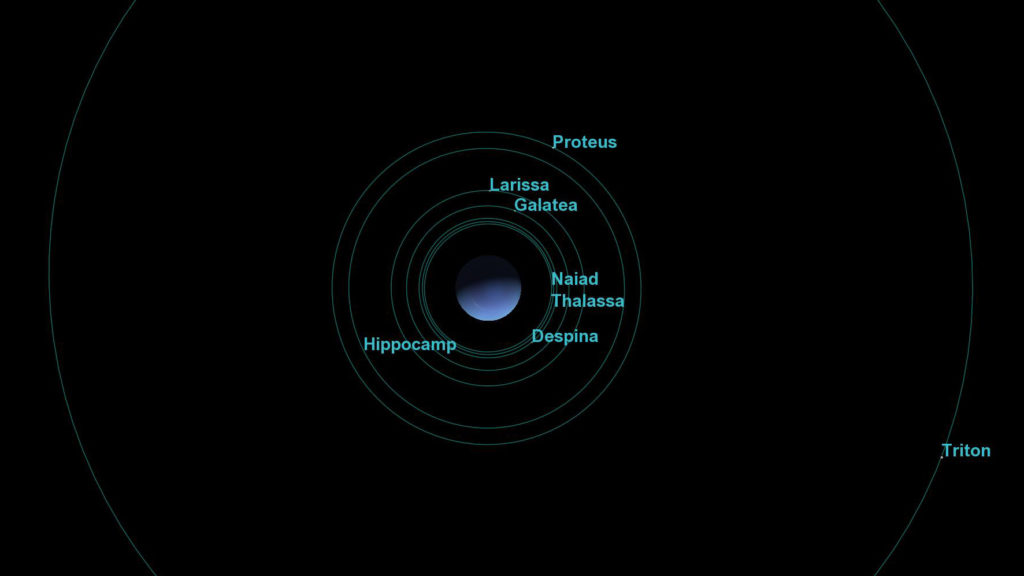
In the years following the Voyager 2 encounter, advances in ground-based imaging technology allowed astronomers to discover five additional moons of Neptune, bringing the total up to the current number 14. These five additions are all irregular moons orbiting at a great distance from Neptune. All are more distant than Nereid. Two of them orbit prograde and three orbit retrograde. They have relatively high eccentricities and inclinations – typical of outer moons.
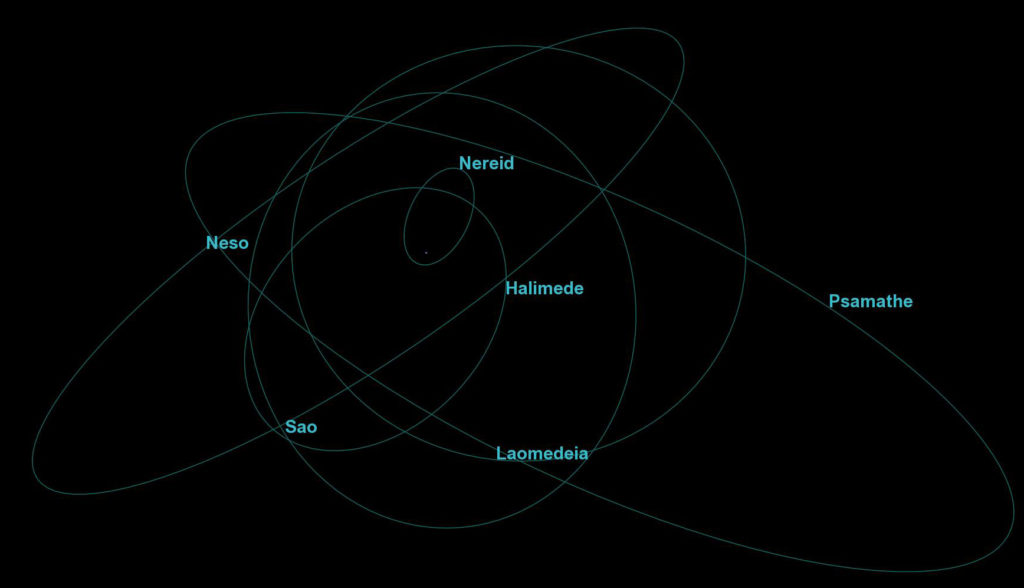

Triton Redux
One of the highlights of the Voyager 2 flyby of Neptune concerned not the planet, but its largest moon Triton. Since Triton was orbiting and rotating as Voyager 2 approached Neptune, Voyager was able to map most of Triton’s illuminated surface. One side of Triton was visible when Voyager was still far from Neptune, and therefore images of this hemisphere are relatively low-resolution. As the spacecraft approached, the other hemisphere rotated into view, allowing high-resolution images of that side. In fact, the trajectory of Voyager 2 brought it very close to Triton, allowing the spacecraft to obtain extremely detailed images of the surface for part of Triton. The transmitted images were astonishing.
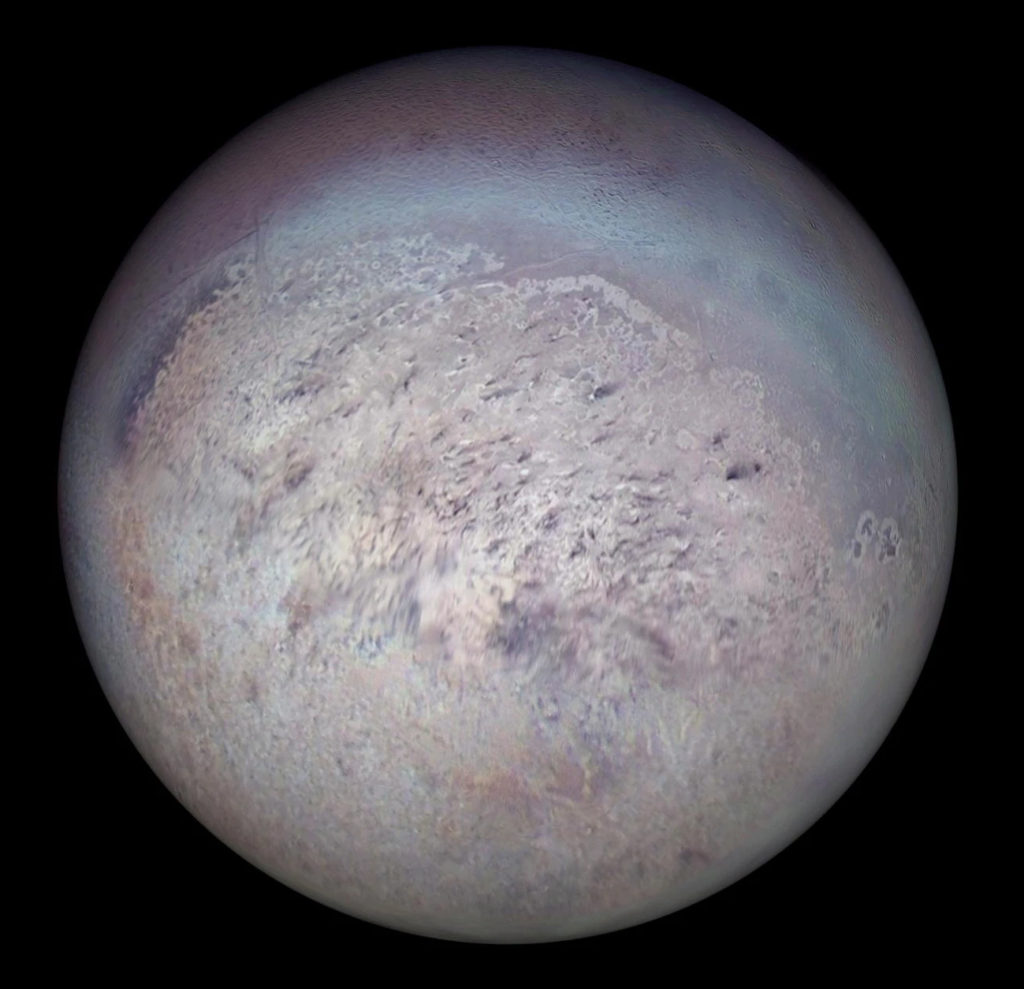
Triton has an extremely strange surface, unlike any other known world. Two very distinct types of terrain are visible on the Voyager 2 images, with slightly different color. The dark terrain in the northern hemisphere seems to have a tessellated pattern throughout.[10] Whereas the southern region lacks such structure, and is considerably brighter. The line of demarcation between the two is strikingly sharp.

Even more amazing was the discovery of hundreds of small black streaks along the surface in the southern hemisphere. These are apparently produced by nitrogen geysers. When these geysers erupt, they carry black soot-like material into Triton’s thin atmosphere. The prevailing winds carry the material some distance before depositing it on the surface, resulting in horizontal streaks. It is an amazing phenomenon. But does it fit into the secular narrative?

Since Triton receives 900 times less energy from the sun than Earth, the temperature is understandably cold. Hence the nitrogen geysers require Triton to have substantial internal heat. But since Triton is smaller than the moon, it makes no sense that it could somehow retain such heat for millions of years, to say nothing of 4.5 billion years. Such internal heat confirms the biblical timescale.
Conclusion
The 1989 Voyager 2 encounter with Neptune closed the final chapter on the grand tour of the solar system. All eight planets have now been visited by spacecraft, and Voyager 2 continues to drift deeper into space. It is currently over 11 billion miles away and is still operational thanks to its radioisotope battery. In November 2018, Voyager 2 passed through the heliopause – the plasma bubble produced by the sun which, by some measures, marks the boundary between the solar system and deep space. Eventually, Voyager 2 will pass within 1.7 light years of the star Ross 248, which will be the closest star to the sun at that time.[11] But don’t hold your breath. This will take 40,000 years.
The exploration of the solar system did not end with the grand tour. The solar system contains countless small bodies and many of these have now been visited by unmanned spacecraft. As we would expect, these also reveal the creative genius of the Lord. More to come.
| Moons of Neptune | |||
| moon | distance (mi) | period | diam (mi) |
| Naiad | 29,965 | 7h 3.9m | 38 |
| Thalassa | 31,115 | 7h 28.6m | 51 |
| Despina | 32,638 | 8h 1.8m | 97 |
| Galatea | 38,496 | 10h 17.3m | 109 |
| Larissa | 45,701 | 13h 19.9m | 121 |
| Hippocamp | 65,420 | 22h 27.8m | 22 |
| Proteus | 73,102 | 1.122d | 261 |
| Triton | 220,437 | 5.877d | 1681 |
| Nereid | 3,426,127 | 360.13d | 222 |
| Halimede | 10,321,000 | 5.144y | 39 |
| Sao | 13,812,000 | 7.974y | 27 |
| Laomedeia | 14,644,000 | 8.682y | 26 |
| Psamathe | 29,885,000 | 24.84y | 25 |
| Neso | 30,624,000 | 26.67y | 37 |
| inner prograde group | |||
| Triton (retrograde) | |||
| outer prograde | |||
| outer retrograde | |||
[1] Adams’s computation was earlier, though less accurate, than Le Verrier’s. And the Cambridge Observatory did begin a systematic search for Neptune before the Berlin Observatory. However, the Cambridge Observatory lacked the detailed star charts of Berlin, and hence was unsuccessful in identifying Neptune among the host of fixed stars. In fact, Cambridge did observe Neptune on several occasions during the search and before the discovery in Berlin. But the new planet was not distinguishable from the fixed stars due to lack of precise star charts of the region.
[2] Indirectly, the name Neptune honors Isaac Newton, whose discoveries in physics and mathematics made Le Verrier’s prediction possible. Namely, the first two letters in the name match: “Neptune” and “Newton.”
[3] Nereid orbits at such a distance from Neptune that Voyager 2 did not come close to it during the 1989 Neptune flyby, and no other spacecraft have visited Neptune. However, the changing brightness of Nereid as viewed from Earth suggests that the little moon is not round.
[4] The eccentricity of Nereid’s orbit is 0.7417.
[5] Even though it is larger than Nereid, Proteus is harder to detect because it orbits so close to Neptune and is easily lost in the glare of the planet as observed from ground-based telescopes.
[6] Neptune was the outermost planet both then and now, but for different reasons. During the 1989 Voyager 2 flyby, Pluto was classified as a planet. But the orbit of Pluto is eccentric, such that Pluto was actually closer to the sun than Neptune during the years 1979-1999. Today, Pluto is farther from the sun than Neptune, but Pluto is no longer classified as a planet.
[7] Pluto was not aligned with this spiral. Hence, the trajectory of Voyager 2 past Neptune was in the wrong direction for an encounter with Pluto. Instead, Pluto would require another mission: New Horizons, which would occur decades later.
[8] Dr. Russ Humphreys made this prediction in 1984, along with the prediction of the magnetic field of Uranus.
[9] The moon Larissa had been detected indirectly from Earth during an occultation of Neptune in 1981. However, Voyager 2 “rediscovered” this moon and was able to image it directly.
[10] Here, we define the northern hemisphere as the same in direction to Neptune’s northern hemisphere, such that Triton’s rotation is retrograde.
[11] Currently, the Alpha Centauri system is the closest star system to the sun. This is a three-star system with Proxima Centauri, the smallest of the three, currently closest to our solar system.

